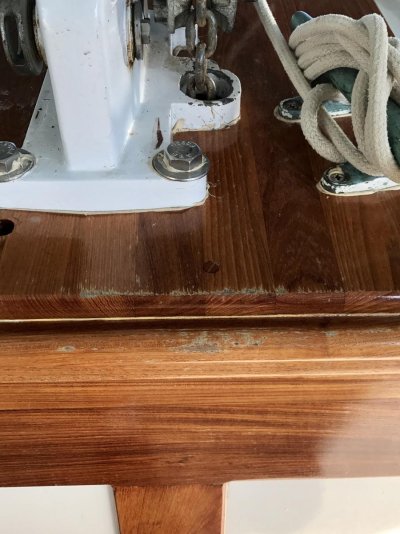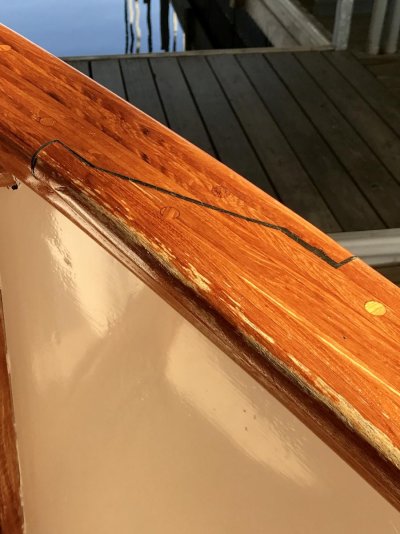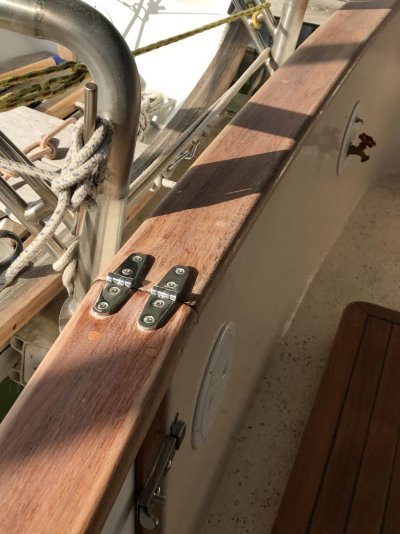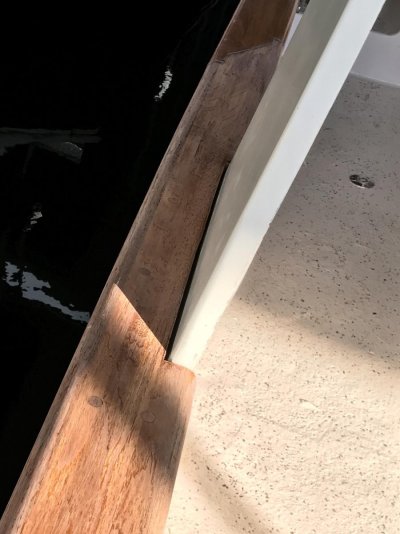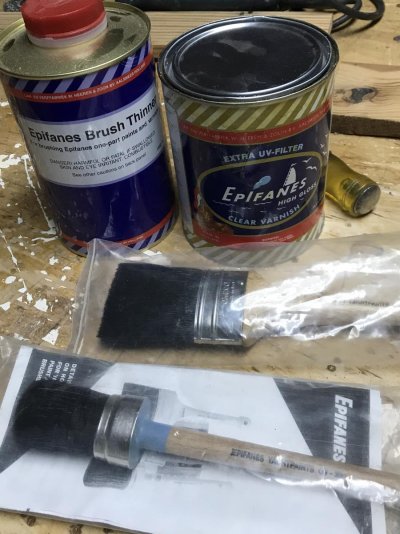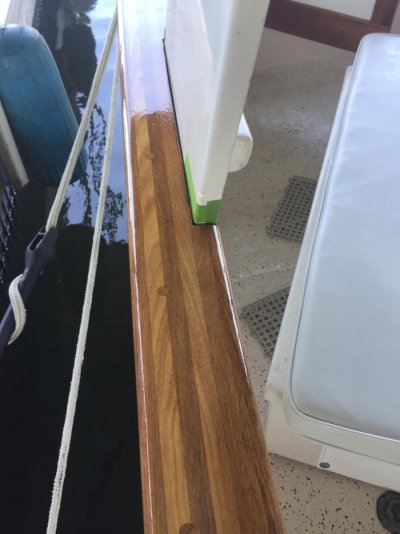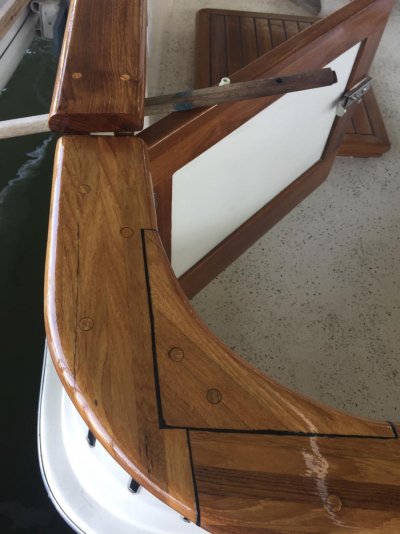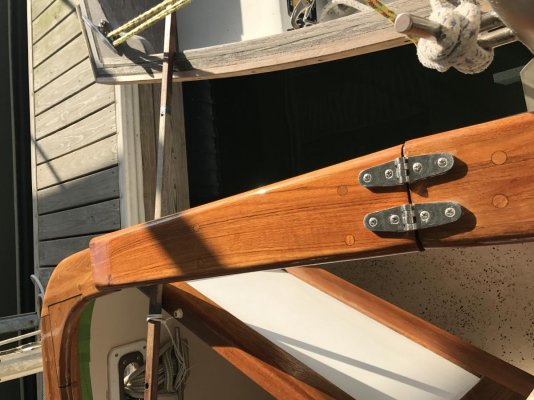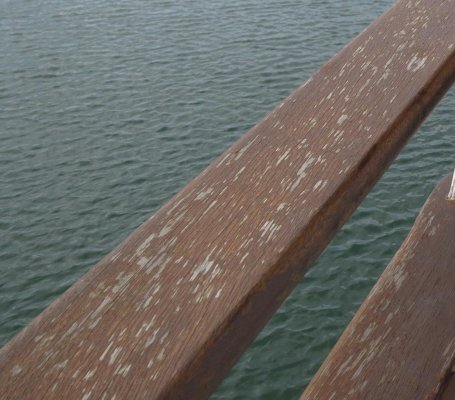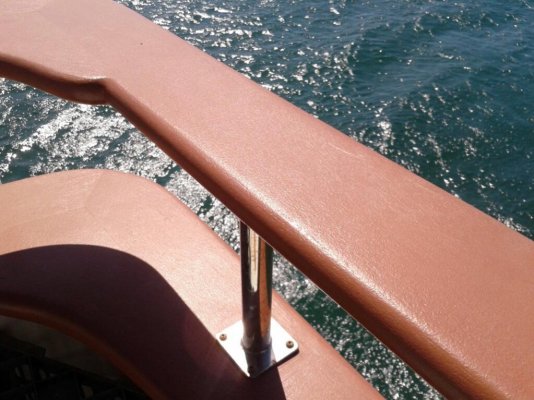I wanted to try this from the beginning but just didn't know enough about it. It was new teak lumber that we had several man hours in making new rails,new doors,hatch and bulkhead.
I learned varnish and painting from my Dad. He always told me to keep same brand name products together. He was old school. I remember him saying varnishing raw lumber is like dating, you don't want to lay it on thick in the beginning, thin the first few coats to allow varnish to get to know the raw lumber then you can lay it on heavy. I miss him, he was a damn good painter. I still have some of his brushes. I do ok at varnish but nothing like him .
This is after 8 coats. Dad always said that magic doesn't happen until coat 13.
Most all of our rails are laminated up to get the curve and width. They would have looked better had I used a one piece rail. I had to laminate because it was the only way to make the yield work out on the lumber otherwise I would've had several short pieces and several scarf joints and a bunch of cutoff pieces that would have been good for anything. Now we have kind of a butcher block look.

